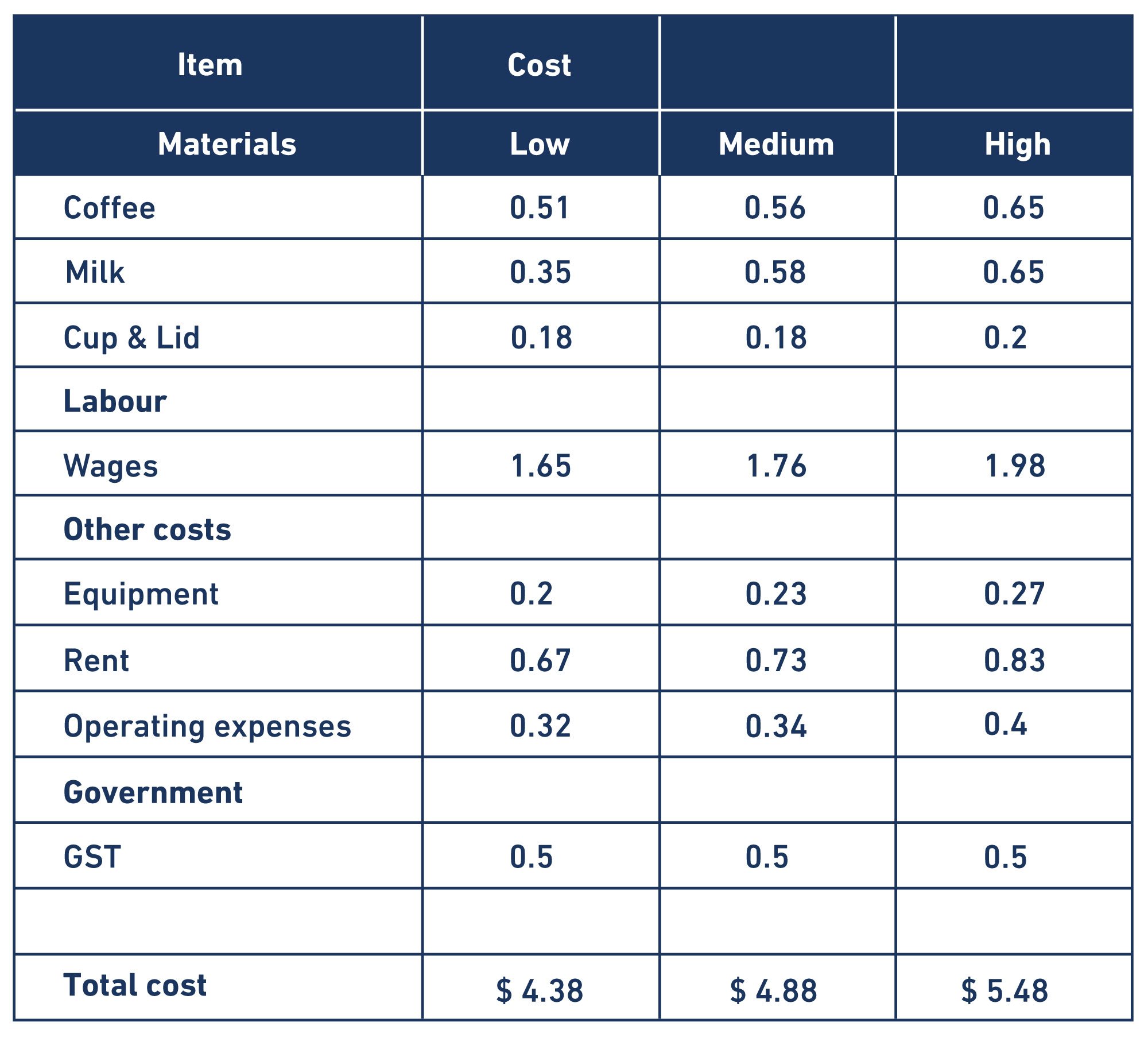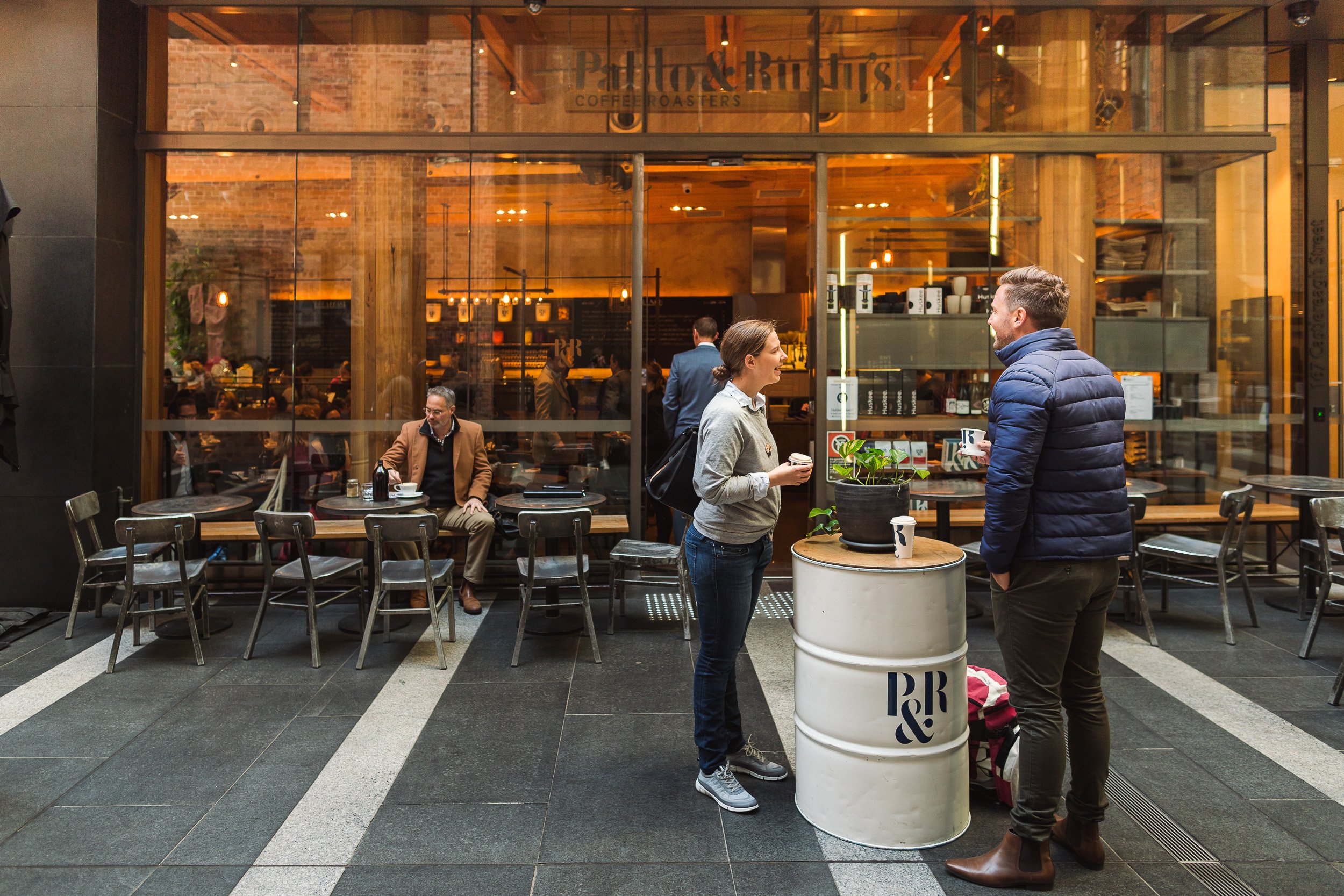Note: Last updated 9th Jan, 2025
The prices of flat whites and lattes have been in the news. Inflation has made it necessary for cafes and venues to adjust their prices due to the costs of inputs going up. At the same time, consumers and staff are becoming increasingly sensitive to the cost of living pressures.
Purpose and Methodology
This article aims to shed more light on the inputs that go into a specialty cup of coffee. The industry is invariably connected. Consumers, staff members, venue operators and owners, and suppliers are all in the same boat. The sector needs each stakeholder to be economically sustainable for the whole sector to stay viable. Most industry reports show that the average margin within cafes is around 2% - 3%. Like any average, that means some cafes will be a lot better than the average, and others will be worse off.
For simplicity, the table shows the input costs for a small takeaway flat white. This is assumed to be an 8-ounce (226 ml) size. Although, 6 oz (170 ml) is also becoming more common. An average range for the cost of each item is calculated. It is assumed that 80 per cent of specialty cafes and coffee venues will fall within this range.
The data for this article has been sourced by our team through industry reports, publicly available benchmarks, and data available to us through our network of clients and our own experience of running cafes. The data methodology considers average ranges and both direct and indirect costs and is in line with industry benchmarks reported by others.


Coffee
The price of coffee beans can vary significantly based on the quality and market conditions. The Australian consumers are discerning when it comes to good-tasting coffee which puts increased pressure on cafes to partner with roasters selling great-tasting specialty coffee. Coffee bean prices have seen sharp rises over the last year due to droughts in Brazil and cafes have to put up their prices in order to continue purchasing specialty coffee.
Milk
Australia is proudly the home of some of the best dairy in the world. The dairy industry has also gone through multiple challenges over the past few years and has had to put its prices up to survive. This has led to further pressure on cafes and the prices of coffee beverages. Also, it’s important to note that many cafes use specialty milk and not the cheapest or regularly available milk. This milk is often more expensive but tastes a lot better with coffee.
Cup & Lids
We are excited to see the industry, as well as regulators, move towards more sustainable single-use items including takeaway cups & lids. We yearn for a future where all single-use packaging is minimised, and when it’s needed, it's only biodegradable or recyclable. A significant percentage of the coffee industry has already moved to more sustainable types of takeaway cups & lids. This shift as well as increased freight costs and a weaker Australian dollar does mean increased costs; however, the cost is worth the investment in a better future.
Wages
The cafe industry in specific and the hospitality industry more broadly is where hundreds and thousands of people work. The industry has had its fair share of challenges, scandals and issues. At the same time, many cafes and venues are a great place to work and a life-long career for many. Without amazing team members, cafes cannot provide great experiences and customer service. The current staff shortages have also meant that many staff members are seeing their nominal wages rise. However, if those increases are not covered through increased prices then cafes will be forced to absorb the difference. This will be difficult as most cafes operate on thin margins. Also, wages have a type of fixed nature to them even when the staff members are casual. Therefore, when a cafe is unpredictably slow due to weather or other reasons, wages can often spike up sharply as a percentage of sales.
Equipment
The price of cafe equipment can vary significantly. This can be as low as $10,000 or even more than $30,000. Most specialty coffee shops need equipment that is at least worth $20,000. Better equipment leads to better quality coffee, more consistency, better workflow and reduced speeds. Sometimes the equipment is bundled with the coffee beans and included in the coffee beans price. For this exercise, I have tried to unbundle this price to give better clarity on the coffee bean as well as the equipment portion. Equipment expenses relate to items such as finance costs, depreciation, maintenance and running costs. Also, we foresee the equipment investment of cafes increasing over the coming years as better equipment can help complement staff members and alleviate some of the staff shortage pressures.
Rent
This is a significant expense for most cafes. Rents can vary based on location, size as well as the landlord. The rents also increase by 4% or CPI (whichever is higher) each year. This puts added pressure on cafes. Rents are also often fixed. For example, whether a cafe is busy or slow, open or closed, it still has to pay the same rent. This means that the rental portion of a coffee’s cost can change dramatically based on how busy a cafe has been. This has been a particular challenge for many cafes, especially those based in CBDs, as the amount of foot traffic, as well as its patterns, have become increasingly unpredictable.
Operating expenses
Cafes have a lot of other expenses such as utilities, repairs, general maintenance, waste removal, merchant fees, pest and hygiene, council charges, marketing, technology fees and so forth. These expenses make up a large portion of a cafe's expenses and must be covered through prices for the cafe to be economically viable.
Conclusion
Like any business, a cafe is a complex operation, and the cost base of each cafe can differ significantly based on factors such as sales, rent, labour intensity, quality of ingredients and customer service. This article shows that there is a lot more than coffee and milk that goes into crafting a cup of coffee. The article also provides insights into the wide range of costs that exist and how each input component can differ between different cafes.



